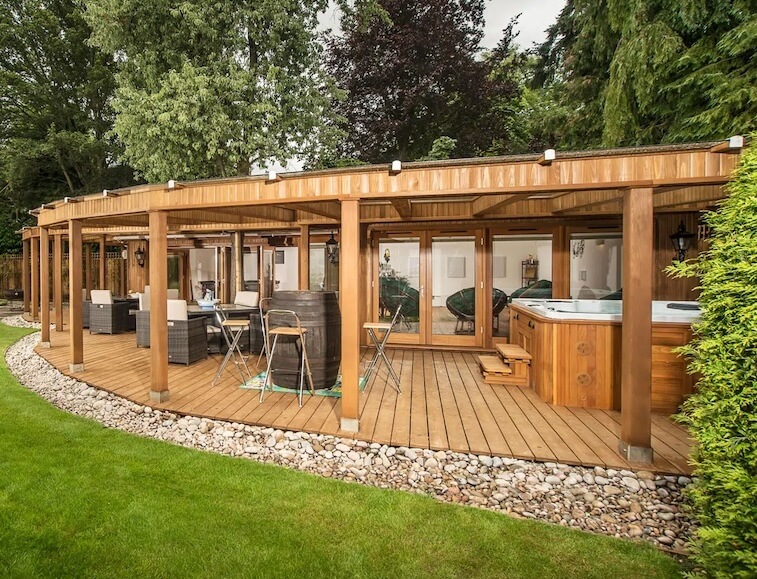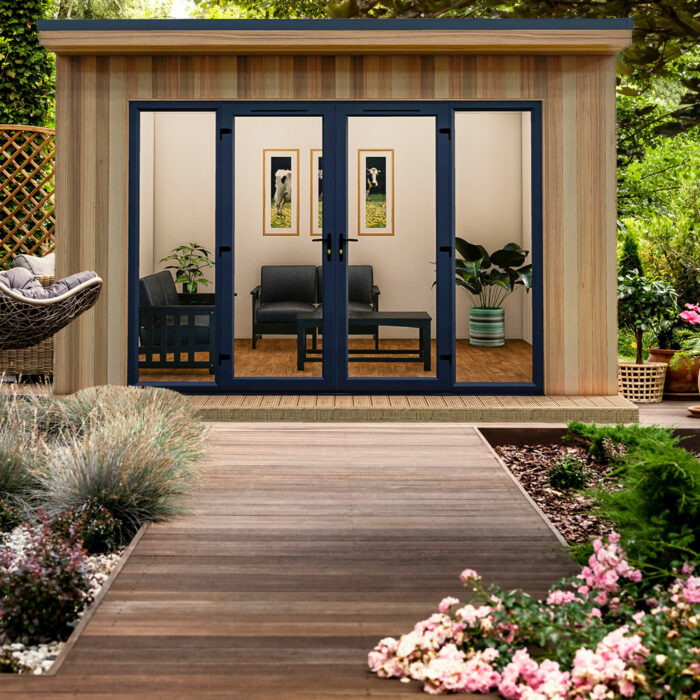Great Reasons On Planning Permission For Garden Outhouses
What Type Of Planning Permission Will You Need To Change The Usage Of Your Garden And So On.?If you are building conservatories, garden rooms, outhouses or garden offices and extensions, the "change of usage" concept is crucial in determining whether the need for a planning permit is necessary. The factors to consider when planning permission is required in relation to a change of use are changing from residential to non-residential use:
Planning permission is required in order to convert an unresidential building like a garage or agricultural building or a house into an office space or a residential space. This is due to the fact that there will be a change in the use classification.
Garden Rooms as Living Space:
The use of the garden space as a distinct living area (e.g. as an apartment, guesthouse or other similar arrangement) is a change in use. It is required to get permission for planning to ensure that a building is in compliance with the standards for residential use.
Business Use
Planning permission may be required in the event that you plan to use your garden room, conservatory or extension as an office (e.g. an office space for home-based businesses with frequent visitors or employess). This is due to the impact it could have on the neighbourhood like traffic, noise and parking.
Utilization in the classroom or in the Community:
To change the use of an existing garden building to be a learning space or community events (such as classrooms or meeting rooms), you will also need planning permission. Local authorities will determine if the site is suitable and the impact it could have on the area.
Impact on local infrastructure
Any alteration in use that has a significant impact on local infrastructure (e.g., roads, drainage, and public services) usually requires planning permission. The local planning authority will be able to consider these impacts when submitting an application.
Dual Use:
Planning permission is required for properties with mixed-use (part commercial, part residential) to define and regulate the various uses of the property.
An increase in footfall, traffic, and revenue
Planning permission could be required if the change in use will likely increase traffic or footfall (e.g. converting the garden into a retail space). This is to mitigate any potential impacts on the surrounding area.
Building Regulations Conform:
Although it is not a strictly permit issue the change of use should be in accordance with building regulations to guarantee safety, health as well as energy efficiency requirements. It is of particular importance when it comes to conversions into habitable areas.
Environmental Impact:
Planning permission is required for any changes to use that may affect the environment. Examples include converting agricultural land into residential use. As part of the application process, you may be required to conduct an environmental study.
Impact of Community and Amenity:
It is important to think about how these changes could impact the amenities of the community and the local character. To take an example the idea of transforming a room in the garden into a cafe shop, you need approval from the planning department. This is to ensure it is compatible with the community's plans and preserves local amenities.
Designated Areas
Modifications to the use of land are strictly controlled in designated areas such as National Parks or Areas of Outstanding Natural Beauty. This is to safeguard the nature and appearance of these places. Planning permission is essential in these cases.
Local Planning Policies
Local planning authorities might have different rules for a change in use. These policies are essential for understanding what changes require approval, and what requirements need to be met.
A planning permit is often required for a significant change in the use or location of a gardenroom, conservatory outhouse, office or extension. The new purpose must be suitable for the location, and conform to the federal and local planning regulations as well as consider the potential social and environmental impacts. Consult your local planning authority at the earliest possible point during the planning stage to identify the necessary requirements and to obtain the necessary approvals. Read the most popular garden room for commercial use planning permission for site examples including composite summer house, garden room planning permission, myouthouse, garden room planning permission, composite garden rooms, 4m x 4m garden room, composite summer house, garden out house, garden room permitted development, garden office electrics and more.

What Planning Permission Is Required For Garden Rooms Etc In Terms Of Listed Buildings?
If you are planning to construct garden rooms, conservatories, outhouses, garden offices or extensions on the property of a listed building, special considerations and stricter rules are in place. These are the most important factors to consider when planning permissions are required for these projects. Listed Building Consent
In addition to getting planning permission, any modification or extension within the boundary of a historic building requires listed-building permission. The reason for this is that changes could alter the appearance and interest of the listed property.
Influence on the historical character
A planning application is required for any construction or extension that could change the historical characteristics of the property listed or its setting. This includes garden structures as well as outbuildings.
Design and Materials:
The design of a new structure must be in line with the historical and architectural significance of a listed building. Planning permission might be required for custom designs or the use traditional construction materials.
Proximity to the listed building:
The effect of new construction near a heritage building is scrutinized to determine if they affect the structure's character. To ensure they don't interfere with the historic character of the building, planning permission is required.
Size and Scale
The size proposed for the conservatory, garden room or extension must be proportional to the existing building. A bigger structure is more likely to need detailed assessment and a planning permit.
Location on the Property
The location of the proposed structure (whether towards the front, side, or rear of the listed building) could affect the need to obtain planning permission. Locations that are visible or have a major impact on the building's key views are usually the subject of a thorough examination.
Internal Changes:
Even if you're taking down the structure that was previously in use, all internal changes to be built must also have planning approval and approved building permits.
Conservation Area Overlap
If the building also falls located in a conservation zone, additional restrictions are in place. It is essential to obtain permission to plan for compliance with the regulations applicable to listed buildings and conservation areas.
The use of the building
The use of an outbuilding or gardenroom may affect the requirement for a planning permit. The authority for planning will pay more attention to uses that indicate a change of significance, such residential or commercial use.
Structure:
If a construction could compromise the structural integrity, it will need planning permission.
Local Authority Guideline:
Local authorities often offer specific guidelines for listed buildings, which define the kinds of construction and modifications that are allowed. These guidelines can only be followed with planning permission.
Professional Assessments
Conservation specialists often have to conduct thorough assessments of proposed work on listed structures. These assessments help determine the suitability of proposed changes and provide an argument for the plan application.
In summary, planning permission and listed building approvals are almost always needed when building gardenrooms, conservatories outhouses, office buildings, or extensions that are associated with a designated building. Consult with your local heritage and planner prior to beginning the planning process to ensure compliance to all applicable regulations and to ensure the preservation of historical and architectural integrity. Check out the best what size armoured cable for garden room for blog advice including garden rooms in St Albans, ground screws vs concrete, garden rooms, 4m x 4m garden room, composite summer house, small garden office, outhouse for garden, outhouse, 4m x 4m garden room, outhouse uk and more.

What Authorizations Are You Looking For In Relation To Garden Rooms And Other Structures Related To Utilities And Infrastructure When It Concerns Planning?
If you are planning to construct conservatories, garden rooms outhouses, garden offices, or extensions, utilities and infrastructure aspects are important and could determine the necessity of planning permission. Here are some of the most important aspects to consider water supply and drainage
It could be necessary to obtain planning permission if the structure is connected to the local water supply system or drainage system. The local authority for water might have to consider the effects on the local water and sewer systems.
Gas and electricity connections:
The planning permission is required if the new structure needs to be connected to gas or electricity. It is vital that the connections are in compliance with all safety standards and construction rules.
Utility Easements
Planning approval is required for structures which are situated within easements (areas reserved to accommodate utility lines and infrastructure). Local utility providers may have to approve any project which takes place within these zones.
Septic Tanks and Sewage Systems
If the building being built is required to have an septic treatment system or perhaps a smaller septic tank on site, then planning permission is needed. Conformity with environmental regulations as well as health standards is vital to these systems.
Drainage and Surface Water Management:
It could be necessary to obtain planning approval in order to deal with the surface runoff and drainage due to the construction. To avoid erosion and flooding as well as polluting water, it could be necessary to take certain steps.
Access to Utilities for Construction
Planning permission is required when temporary utility access (such water) is required for construction. Connections that are temporary are subject to environmental and safety rules.
Impact on local infrastructure:
Planning permission is required to evaluate the impact of new structures on local infrastructure including utilities, roads, and public services. Local authorities will assess whether the existing infrastructure will support the development.
Waste Management & Recycling
Planning permission could require conditions for recycling and waste disposal in the construction phase or even after. To reduce the environmental impact of construction, it's crucial to have sufficient provisions for recycling and waste management.
Energy Efficiency & Renewable Energy
It could be necessary to obtain planning approval prior to installing energy-efficient systems or renewable energy sources (such solar panels and heat pumps) within your new structure. The codes for construction and environmental regulations must be adhered to.
Telecommunications, Internet and Connectivity
Planning permission could be required when the proposed structure requires telecommunications and internet connections. Conformity with standards and regulations for the infrastructure of telecommunications.
Access to the Footpath and Road:
It is possible to obtain planning permission for the construction or modify the footpaths and access roads of an entirely new structure. When building roads and paths it is crucial to adhere to the safety requirements.
Accessibility of public transport:
Planning permission may be needed in the event that a proposed structure is interfering with the public transport infrastructure (such a bus stations or stops). Public transport infrastructure must adhere to regulations and standards.
In the end, utilities and infrastructure considerations are the most important factors to consider when deciding whether planning permission is needed for conservatories, garden rooms and outhouses, gardens extensions, offices or other buildings. It is crucial to talk with your local planning authority prior to beginning the planning process to ensure that the building is in compliance with all applicable laws and guidelines. Read the recommended 5 counties garden rooms for blog advice including outhouses for garden, copyright garden buildings, how to get power to a garden room, garden rooms brookmans park, do i need planning permission for a garden room with toilet, garden office electrics, outhouse for garden, outhouse uk, garden room planning permission, what size garden room without planning permission and more.
